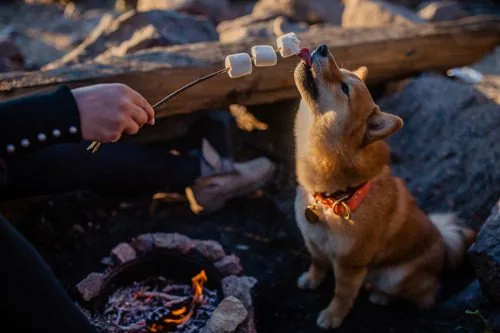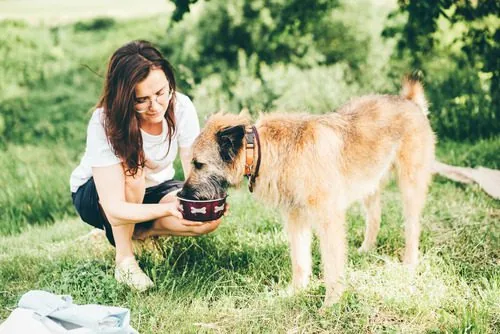Do you have a new puppy in your family? If so, you’re probably already aware of just how tricky it can be to crate train your newest family member. However, crate training is a great solution for many puppies, and if you’re thinking of trying to crate train, you’re definitely not alone.
In this article, we’ll explore some of the most important tips you should keep in mind when trying to crate train your puppy. Read through this list to get a better idea of what to expect from your crate training experience and how to set your puppy up for success. If you have any questions, call Boughton Square Animal Clinic in Bolingbrook at (630) 759-0093.
Choose the Right Size
The right size of crate for your dog will depend on their current size as well as their projected adult size. You don’t want to get a crate that is already too small for them, but you also don’t want to end up buying several crates throughout the course of their life if you can help it.
The best solution in this situation is to get a crate with a divider. This way, you can slowly move the divider as your dog grows, eventually taking it out altogether when they reach their full size.
Consider Beds
Some dogs will only lay down in a crate with a bed inside it. On the other hand, some dogs only want to chew up, destroy, or pee on beds. It’s important to take the time to try a few options so you can figure out which is right for your dog.
If your dog chews up beds, you might try putting towels in the crate so they can be comfortable instead. However, if they chew up everything you put inside the crate, there’s no harm in letting them use it without any padding.
Offer Treats
Treats are the best way to encourage your dog to get used to crate training. By giving your dog a treat every time they go into their crate, you’re helping them understand that the crate is something good instead of something they should avoid.
One of the most popular treat options for crate training is a classic Kong chew toy. These toys are shaped like a snowman and feature a large hole in the bottom that you can fill with treats or food. If you fill the Kong with peanut butter or wet dog food and then freeze it, this toy can occupy your dog for a long time in their crate.
Work Up Slowly
No puppy wants to be put in a crate for hours at a time without ever experiencing crate training before, and your dog is no different. When you start working on crate training, it’s important to work up slowly to extended periods of time. Start with just a few minutes, then try leaving them alone for an hour after they’ve gotten used to the process.
It can be tempting to leave your puppy in the crate for a long time while you’re at work, but try to avoid this if possible—at least not without potty breaks.
Make it Positive
The crate should be seen as a positive experience for your dog. You should try to avoid using it for punishment (although it is okay to give your dog a short “time out” to help them calm down if needed), but instead make it a restful place where they can sleep comfortably.
The more positive associations you build between your dog and their crate, the more likely they will be to enjoy their time in the crate, even when they’re home by themself.
Take Breaks
Finally, make sure you give your puppy plenty of breaks when they’re first getting started with crate training. An adult dog can easily stay in a crate for a few hours without needing to take potty and play breaks, but a young puppy needs to develop properly. For this reason, you should take your puppy out every couple of hours for pottying, playtime, and food if necessary.
Dogs don’t like to go potty in the same place where they sleep, so your dog might learn to hold their urine and feces very early on. This is not healthy, however, so it’s a good idea to give them plenty of chances to potty outside the crate.
With the help of this information, you should be ready to get started crate training with your new puppy in no time. It can be challenging to get your puppy used to the idea of being crated, but with the right effort and planning from you, there’s no reason why your puppy can’t succeed at this experience.
If you have any more questions about your specific puppy’s needs, you might want to talk to a professional trainer for additional information. A trainer can answer questions based on your household, your dog, and other factors too. Call us today at (630) 759-0093.
Recent Posts
6 Possible Causes for Your Cat’s Sneezing
6 Possible Causes for Your Cat’s Sneezing Cats are known for their curious and playful nature, but…
Why is My Dog Eating Grass?
Why is My Dog Eating Grass? Dogs are known for their curious behaviors, and one that often…
Can Dogs Eat Marshmallows?
Can Dogs Eat Marshmallows? Marshmallows are a popular treat for many people, but pet owners often wonder,…
Can Dogs Get Sunburn?
Can Dogs Get Sunburn? As summer approaches and the days get longer, many pet owners look forward…
Dog Dehydration: Symptoms, Treatment and Prevention
Dog Dehydration: Symptoms, Treatment and Prevention Dehydration in dogs is a common but often overlooked condition that…
About Boughton Square Animal Clinic
Since 1979, Boughton Square Animal Clinic has served Bolingbrook, IL and surrounding communities as both a veterinary care provider and a devoted partner in treating your animal family members for life.







